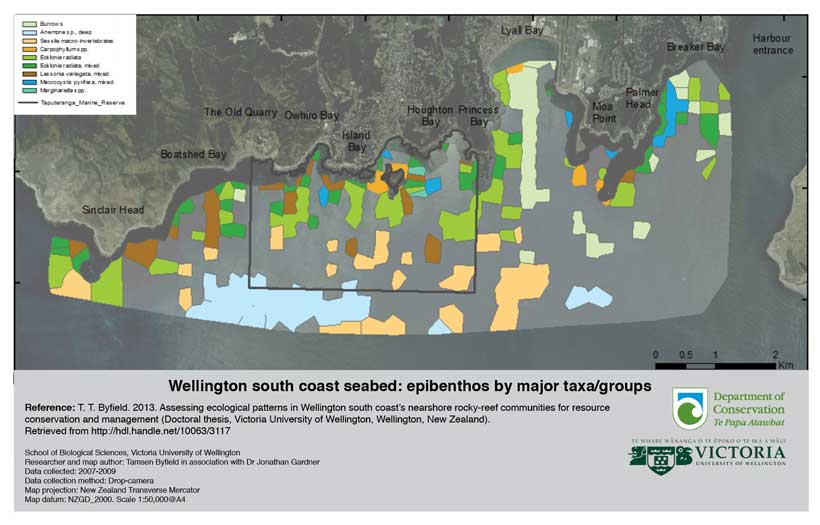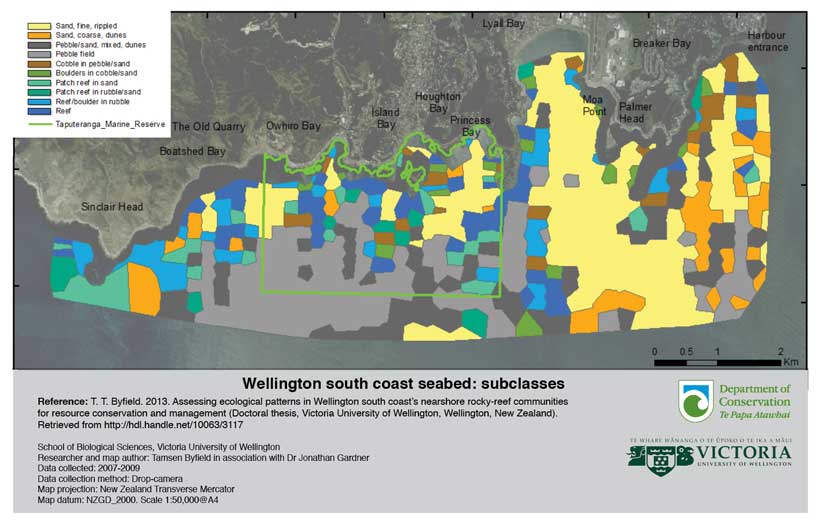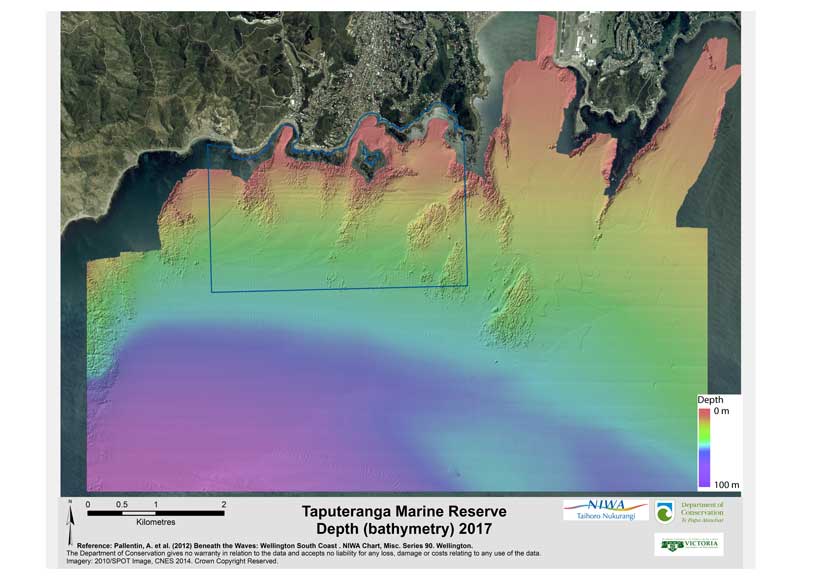Habitat diversity in Taputeranga Marine Reserve
Introduction
How diverse is the habitat in Taputeranga Marine Reserve and how is it changing?Taputeranga Marine Reserve contains a very diverse range of habitats from undersea reefs, boulders, caves and rocks on the exposed coastline, to gravel and sand in more sheltered harbour sites at Island Bay.
Brown kelp thrive at the exposed sites that experience high winds and waves, severe storms and powerful tidal currents, and form large forests. Smaller red, green and coralline seaweeds live beneath them. Almost 400 species of seaweed (about half of New Zealand’s total 850 species) can be found in the marine reserve.
Beneath and beyond the kelp beds live more than 180 species of fish, as well as rock lobster (crayfish/kōura), kina (sea urchin), pāua, starfish, crabs, sponges and octopus. Very few mussels are found on the rocky reefs here, unlike other similar habitats in New Zealand. Scientists think this may be because of low levels of nutrients and particles (that act as food) in the water.
Seabirds, including Northern blue penguins (kororā), nest along the shore and on Taputeranga Island. Killer whales/orca and dolphins are often seen foraging in the reserve, sometimes quite close to shore. Humpback and southern right whales visit during their annual migration. Many albatross and petrel species pass through Cook Strait and a colony of New Zealand fur seals/kekeno spends the winter months at Red Rocks/Pariwhero just beyond the marine reserve boundary at Ōwhiro Bay.
Status: good
The habitat diversity was assessed by comparing the area’s actual diversity with its expected diversity. The expected habitats are found in the marine reserve and are typical of Wellington’s south coast and the Cook Strait region.
Trend: undetermined
We are unable to report a trend for this measure because to date, only one assessment of habitat in the marine reserve has been carried out (see maps below).
Threats to the health of the marine reserve include illegal fishing and fishing close to the boundaries of the marine reserve, as well as marine pests, climate change and pollution (sediment and stormwater runoff via streams).

Wellington south coast seabed: epibenthos by major taxa/groups View larger (JPG, 856K)

Wellington south coast seabed: subclasses View larger (JPG, 917K)
Depth map
This map shows the depth of the sea off Wellington's south coast and highlights areas of rocky reef. The marine reserve boundary is shown in blue.

Taputeranga Marine Reserve depth 2017 View larger (JPG, 2.667K)
Reports
- Assessing ecological patterns in Wellington south coast's nearshore rocky-reef communities for resource conservation and management. Byfield PhD thesis 2013.
- Otari and Taputeranga bioblitzes: diatoms – microscopic algae. Harper and Harper 2010.
